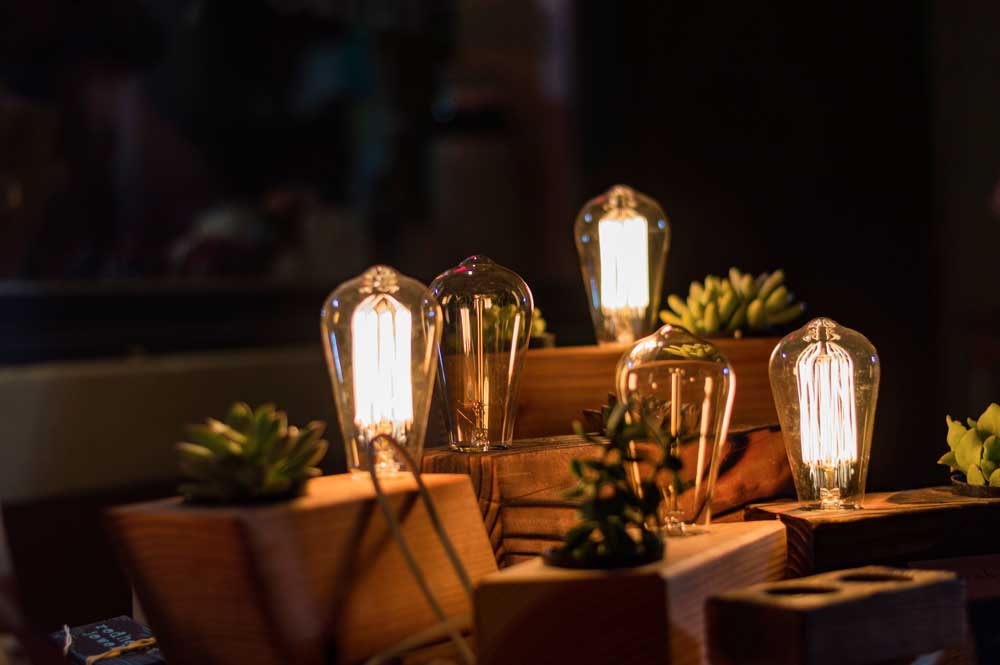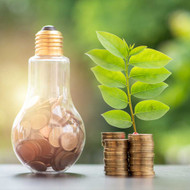How Much Does It Cost to Run LED Lights?
How Much Does It Cost to Run LED Lights?
LED technology has come a long way in the last decade. Previously, LED bulbs were seen as undesirable in homes due to their cold, harsh light and the length of time it took for them to warm up and reach full brightness. However, advancements over the past few years have meant that LEDs are now seen as the superior lighting option in almost all applications.
In addition to their instant brightness and greater range of colours, modern LED lights boast fantastic energy efficiency. With energy prices rising constantly, this factor is hugely important to families and businesses alike, as more efficient lighting could help you save a lot of money on electricity bills.
Knowing the facts on LED lighting is essential if you want to save energy and therefore save money too. Are LED lights cheaper to run? Will LED lights reduce your carbon footprint? How much does an LED bulb cost to run? Find out the answers to all these questions in this helpful article.

UK Energy Prices and Soaring Bills
Since the invasion of Ukraine and the spike in demand after Covid restrictions were lifted, energy costs in the UK have increased massively. At the moment, energy prices are being stabilised by the government’s Energy Price Guarantee, but once this scheme ends in April 2023, the energy price cap is likely to increase again and make energy bills more expensive.
Currently, the Energy Price Guarantee is limiting the amount that suppliers can charge per unit of energy used. This is set at 34p/kWh for electricity and 10.3p/kWh for gas, meaning that the average household in the UK is paying £1,155.21 for electricity annually (with energy bills amounting to an average total of £2,500 per year).
The pressure is perhaps even more intense for small businesses, as businesses in the UK don’t have the same energy price cap. Businesses are currently supported by the Energy Bill Relief Scheme, but government support will decrease after April 2023.
At this difficult time, individuals and businesses are doing all they can to reduce their energy usage and therefore lower their energy bills. One area to target in particular is lighting, as this makes up around 11% of the average household’s electricity usage. Although 11% may not seem like a lot, it can make a huge difference as part of a large bill.
Types of Light Bulbs
Using the right light bulbs can help you increase your household’s or business’s energy efficiency and therefore cut down your energy bills. Here are the main types of light bulbs you should be aware of:

- Halogen bulbs and incandescent bulbs. These types of lighting are older and therefore less energy-efficient. They use more energy because they can only convert around 5% of the energy they receive into light - the rest is converted to useless heat energy. As a result, these bulbs can go up to 100W-120W. Traditional incandescent bulbs and halogen bulbs are now being phased out of the market, but you could still have some of these light bulbs at home or in a commercial setting.
- Compact fluorescent lights (CFLs). These bulbs were created as an energy-saving alternative to older types of lighting. In fact, CFLs are around 60-80% more efficient than incandescent lights, and the bulbs are typically around 6W-22W. This means they use significantly less power.
- Light-emitting diodes (LEDs). These light bulbs contain a semiconductor that lights up when an electrical current passes through them. LEDs are the most energy-efficient option as they can convert around 90% of the energy they receive into light, and the bulbs will usually be only 4W-18W. In addition, they don’t contain mercury like CFLs, making them safer and more environmentally friendly.
Are LED Bulbs Cheaper to Run?
Yes! LED bulbs are much more cost-effective, even compared to energy-efficient CFLs.
As you can see from the information above, LED lights need a lower wattage to produce an equivalent amount of brightness (measured in lumens). As an example, a 60W incandescent bulb produces 800 lumens, but you could replace this with a 9W LED bulb and still get 800 lumens. This means you can get the same amount of brightness with much less energy, which will drive down your electricity bills.
CFL bulbs are much more efficient than incandescent bulbs, but they still pale in comparison to LEDs. For example, if you want to replace your 60W incandescent bulb with a CFL bulb, you’ll need one that’s 15W to get the same 800 lumens.
Lifespan
Another factor you need to consider is lifespan. If a light bulb lasts longer, you won’t need to replace it as often. This can save you a lot of money in the long run.
One thing that people find off-putting about LEDs is the higher price compared to other light bulbs. However, you need to bear in mind that LEDs can last at least 25,000 hours and often up to 50,000 hours, whereas CFLs only last up to 10,000 hours. Incandescent bulbs, which are the cheapest option, last a measly 1,000 hours.
If you consider both the cost of electricity and the cost of replacing the light bulb, the initial high price of LED lighting becomes less significant. In fact, these benefits definitely outweigh the initial costs as LEDs are so much cheaper overall.
Carbon Footprint
Lower energy consumption isn’t just good for your wallet. By reducing your electricity bill, you’ll also reduce your carbon footprint and do some good for the planet. Switching to LED bulbs in your home can reduce your carbon dioxide emissions by 40kg a year, so this change is absolutely worthwhile.
How Much Do LED Lights Cost to Run in the UK?
The running costs of your lighting will depend on the number of bulbs you have, the wattage of the bulbs and how many hours they’re on each day. To work out an example of current costs, we’ll also need to use the electricity price cap, which is 34p/kWh.
If you had one 3W LED light bulb that was on for 10 hours each day, the running costs for the entire year would be £3.72. For an equivalent non-energy-saving light bulb, you would expect to pay £14.89 for the year, factoring in the cost of replacing the light bulb every 1,000 hours. You can use these figures to estimate the costs for different wattages too: for example, one 9W LED bulb would cost £11.17 annually when used for 10 hours a day, and it would cost £5.58 annually for five hours of daily use.
As you can see, the LED bulb is significantly cheaper. According to the Energy Saving Trust, switching from 100W incandescent lighting to equivalent LED lights can save you £9 per year for each bulb, so this can really start to add up and make a difference to your electricity bill.

More Energy-Saving Tips
This year will be challenging for many households and businesses. To help you get your electricity costs down, here are some extra money-saving tips you can try:
- Switch to LED light bulbs and LED light strips for your home and business
- Always turn lights and appliances off when not in use
- Switch to smart LED bulbs that can be controlled by an app
- Use light bulbs with a lower wattage
- Use a dimmer switch
- Check the energy efficiency rating of all electrical appliances
- Avoid tumble drying
- Use the dishwasher less or only use it when it’s full
- Walk or use public transport where possible
- If you can, use jumpers and hot water bottles instead of central heating
Where to Buy LED Lighting
Are LED lights cheaper to run than other types of lighting? Absolutely!
If you’ve decided to replace your inefficient lighting with LEDs, make sure you visit the UltraLEDs website to find the best deals on LED lighting. We offer an extensive range of LED solutions, including LED bulbs, LED strip lights, LED neon lights and LED festoon lights, all at a fantastic price.


